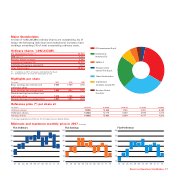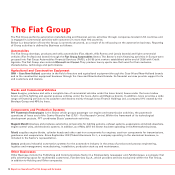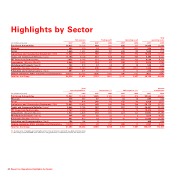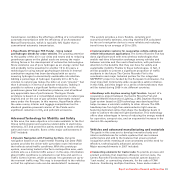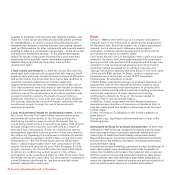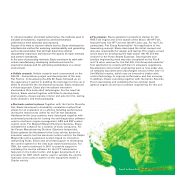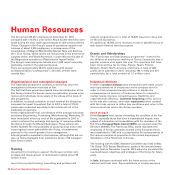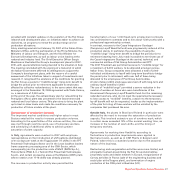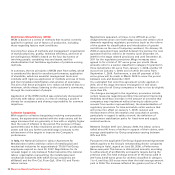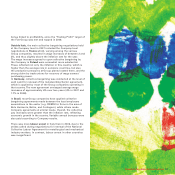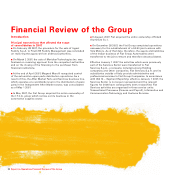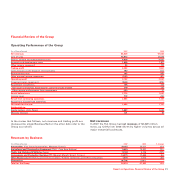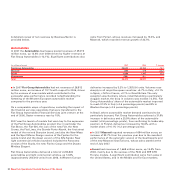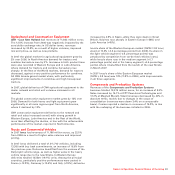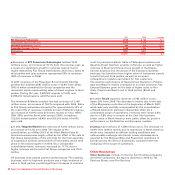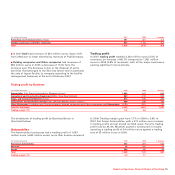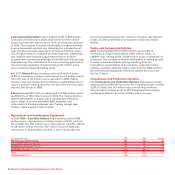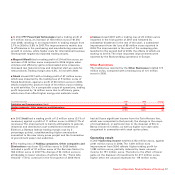Chrysler 2007 Annual Report Download - page 28
Download and view the complete annual report
Please find page 28 of the 2007 Chrysler annual report below. You can navigate through the pages in the report by either clicking on the pages listed below, or by using the keyword search tool below to find specific information within the annual report.provided with constant updates on the evolution of the Fiat Group
relaunch and development plan, on initiatives taken to achieve set
objectives, on programs to renew the product range and on
production allocations.
A key meeting was held on February 19, 2007 at the Italian Prime
Minister’s Office, with the participation of the Prime Minister, the
Ministers of Labour and Transport, and the Vice Minister for
Economic Development, as well as labour union leaders at the
national and industry level. The Chief Executive Officer Sergio
Marchionne illustrated the Group’s development plans for 2007-
2010, with special attention being devoted to the situation in Italy.
The meeting concluded with the signing of a transcript in which
the Italian Government affirmed its willingness to support the
Company’s development plans, with the reserve of a careful
assessment of the initiatives taken in support of investments and
research. It recognised the existence of the conditions for granting
the Fiat Group a quota for “mobilità lunga” (long-term benefit to
bridge the period prior to retirement applicable to employees
affected by collective redundancies), to the same extent that was
envisaged in the December 18, 2006 agreement with Trade Unions,
i.e. a maximum of 2,000 units.
At the end of the year, the extraordinary plan for relaunching the
Pomigliano d’Arco plant was presented to the Government and
national and local labour unions. This plan aims to bring the plant
up to best-in-class levels and create the conditions necessary for
production of future models at this plant.
Management of production demands
The improved market conditions and higher sales in most
Sectors entailed the need to increase production volumes.
According to the specificities of the various entities, this need
was met through overtime work, use of temporary workers,
and scheduling of additional shifts to achieve greater
saturation of plant capacity.
In Italy, agreements were reached in 2007 with employee
representatives on the introduction of shift patterns distributed
over six days per week at the Foggia plant (17 shifts) in the FPT
Powertrain Technologies Sector and in the Lecce backhoe loaders
frame carpentry processing area of the CNH Sector, which
consequently join the production units of Melfi (SATA S.p.A.),
Pratola Serra (FMA S.r.l.), Termoli (Fiat Powertrain Technologies
S.p.A.), and certain processing areas at the Modena (CNH) plant,
where rotation over 17-18 shifts was already planned.
The increase in production activity also permitted the
transformation of over 1,000 fixed-term employment contracts
into unlimited term contracts and to hire about 1,000 youths with a
professional apprenticeship contract.
In contrast, recourse to the Cassa Integrazione Guadagni
(Temporary Layoff Benefits Fund) was progressively reduced at the
production plants. In particular, the possibility of using the
“mobilità lunga” (long-term benefit to bridge the period prior to
retirement) starting from July made it possible to terminate use of
the Cassa Integrazione Guadagni at the central, technical, and
commercial entities of Fiat Group Automobiles and FPT.
The 2007 Financial Law permitted recourse to “mobilità lunga” for
a maximum of 6,000 workers, to be allocated amongst various
Italian firms. Group companies were allocated a total of 2,000
individual entitlements to layoff with long-term benefits to bridge
the period prior to retirement, with over half of these being
allocated to the employees of Fiat Group Automobiles.
A total of about 2,600 employees were laid off with long-term and
ordinary layoff benefits in 2007.
The use of “mobilità lunga” permitted a severe reduction in the
number of workers at Arese who were beneficiaries of the
Government’s Temporary Layoff Benefits Fund. For the remaining
redundant workers, who do not meet the requirements necessary
to have access to “mobilità” benefits, a waiver to the temporary
lay off benefit will not be requested, insofar as the implementation
of the plan for hiring of these workers will be solicited by the
companies that purchased the area.
Outside Italy, the plants in Brazil and Poland in particular were
affected by the need to increase the saturation of production
capacity. This involved extensive use of overtime work, which
in certain cases exceeded 10% of the normal working time, an
increase in the number of work shifts, and the hiring of
temporary workers.
Agreements for working time flexibility according to
fluctuations in production requirements were applied in
Germany (Iveco), as well as in CNH Plants in Belgium and
Poland, where this is a standard practice due to the seasonal
nature of the business.
Restructuring and reorganization activities were more limited, and
principally involved streamlining the Fiat Group Automobiles
proprietary sales and dealer network in Europe, reorganization of
Comau activities in France (sale of the engineering business and
social plan at the Trappes plant), and termination of engine
production at the CNH plant in Basildon (UK).
Report on Operations Human Resources 27


